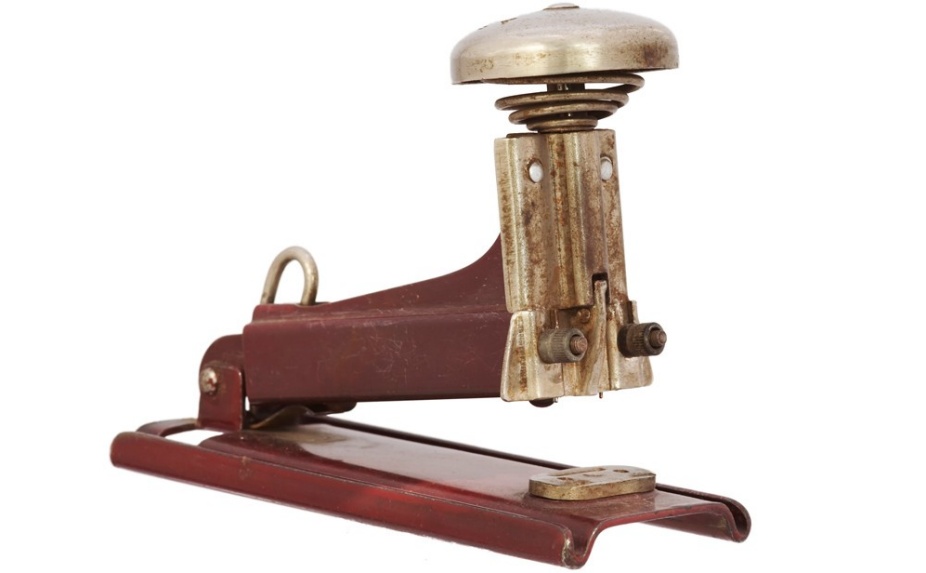Keeping it all together: The history of the stapler
BY DELANEY REH

From the French royal palace to the ordinary classroom, the stapler is an office supply must-have that did not come from humble beginnings. Legend has it that the first known stapler device was made in the 18th century as a regal gift for Louis XV. However, that all changed when George McGill received U.S. patent #56,587 for “small, bendable paper fasteners” in 1866. This patent was the start of creating the everyday item known as the modern stapler.
The word “stapler” first appeared in 1901 in the American magazine, Munsey’s, to describe a machine that fastens papers together using a small metal wire. The invention created a new everyday convenience with the days of dropping documents and making a mess in the past.
In the decades to follow, the stapler became a necessary item needed in every classroom, office or home to secure one’s papers together in ideal order.
Staplers come in all different shapes and sizes, which creates a new layer of enjoyment for back-to-school supplies and self-expression. There is an abundance of colors and quirky designs for students and teachers to pick from—many office supply stores even sell staplers in the shape of various foods or animals.
Classrooms are not the only place you will find these items—the stapler started as a small invention to hold papers together, but the idea broadened to other areas: Surgical staplers in the medical field close wounds and contractors use construction staplers to attach materials such as steel or wood.
In a new emerging world of computers and digital writing, the purpose of staplers is becoming obsolete. Although, if paper copies exist, staplers will continue to have relevance. Besides, saving a virtual document will never bring the same satisfaction of stapling together papers to signify a new task completed!